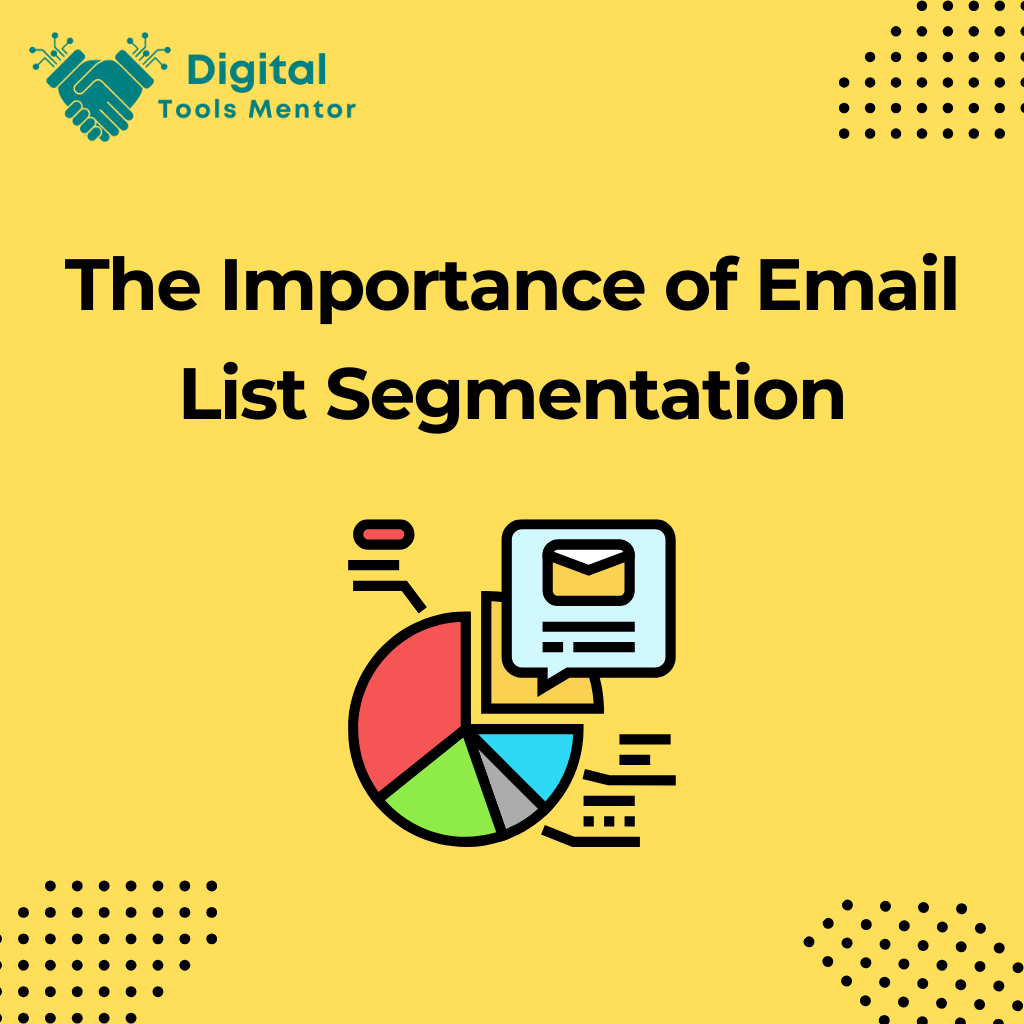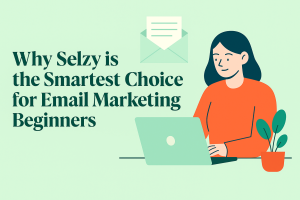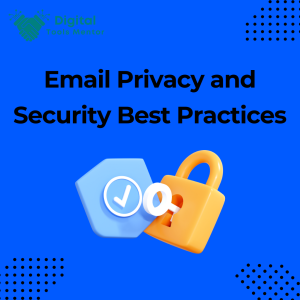Why Email List Segmentation Is Important?
Email list segmentation is the process of dividing your email subscribers into smaller, more focused groups based on specific criteria such as demographics, purchasing behavior, or engagement levels. This strategy allows marketers to tailor their messaging and offers to meet the unique needs and interests of each segment, rather than sending generic communications to all subscribers.
The importance of email list segmentation in modern email marketing strategies cannot be overstated. In an era where consumers are bombarded with information, personalization has become key to capturing attention. Segmentation allows marketers to send highly relevant content that resonates with individuals, significantly increasing the likelihood of engagement. By ensuring that the right messages reach the right people at the right time, businesses can foster stronger relationships with their audience, enhance customer satisfaction, and drive more effective marketing results.
In essence, email list segmentation is more than just a tactic; it’s a fundamental component of successful email marketing that helps businesses stay competitive in a crowded digital landscape. By implementing segmentation, marketers can achieve higher open rates, better click-through rates, and increased conversion rates, ultimately leading to improved overall marketing ROI.
Understanding Your Audience
In the realm of digital marketing, understanding your audience is paramount. The better you know your audience, the more effectively you can tailor your content, offers, and messages to meet their specific needs and interests. This tailored approach not only enhances engagement but also boosts the relevance of your communications, making your marketing efforts more successful.
The Importance of Tailoring Content
Tailoring content to your audience ensures that each communication feels personal and relevant. When recipients feel that messages speak directly to their needs or solve their problems, they are more likely to engage with the content and take the desired action, whether it’s making a purchase, signing up for a webinar, or simply clicking to read more. This personalized approach helps in building trust and loyalty, which are crucial for sustaining long-term customer relationships.
How Segmentation Enhances Audience Understanding
Segmentation plays a critical role in deepening your understanding of different audience segments:
- Identifying Preferences and Behaviors: By segmenting your email list based on criteria such as past purchases, browsing behavior, or demographic information, you can gain insights into what different segments of your audience prefer and how they behave. This data allows you to craft messages that are specifically designed to appeal to each segment’s unique tastes and needs.
- Improving Content Relevance: Segmentation enables you to deliver content that is more relevant to the interests of specific groups. For example, sending targeted promotions based on user location or previous purchases can dramatically increase the relevance and effectiveness of your campaigns.
- Testing and Feedback: Segmentation also allows you to test different messages and offers with different segments of your audience and gather feedback. This can help you refine your marketing strategies over time, ensuring that they remain effective as your audience’s preferences evolve.
- Enhancing Customer Journeys: By understanding the specific needs and behaviors of different segments, you can design customized journeys through your marketing funnel that are more likely to convert. Each step of the journey can be optimized to cater to the preferences of each segment, from the initial contact through to post-purchase follow-up.
In conclusion, segmenting your email list isn’t just about sending different emails to different people—it’s about creating a more personalized and engaging experience that resonates with the specific needs and preferences of your audience. This tailored approach not only improves engagement rates but also contributes to higher customer satisfaction and loyalty, ultimately driving better business outcomes.
Explore 23 Best Email Marketing Platforms in 2025
The Basics of Segmentation
Segmenting your email list is a strategy to ensure that your marketing messages are as relevant as possible to each recipient. By grouping your audience based on shared characteristics or behaviors, you can tailor your communications to meet the specific needs and interests of each segment. Here’s a look at some common criteria for segmenting email lists and how you can apply these to enhance your marketing efforts.
Common Criteria for Segmenting Email Lists:
- Demographics: This includes age, gender, location, education level, and job title. For example, a fashion retailer might send different promotions to teenagers in high school versus adults in corporate jobs, reflecting style preferences and budget differences.
- Purchase History: Segmenting by past purchases can help you customize offers based on the likelihood of future needs. For instance, customers who previously purchased a certain type of product (like skincare items) might receive emails about similar products or replenishment reminders.
- Engagement Levels: Track how often and how deeply subscribers engage with your emails. Segments can include active users, infrequent openers, and those who have never engaged. Tailoring content to re-engage dormant subscribers or reward active ones can optimize your engagement rates.
- Customer Lifecycle Stage: Customers can be segmented according to their stage in the buying cycle, such as new subscribers, regular customers, or lapsed customers. Each stage may require different marketing tactics and messaging to move them to the next level of engagement or purchase.
- Geographical Location: Geographic segmentation allows for targeting messages based on location-specific data, which is particularly useful for local events, store openings, or region-specific offers and products.
- Psychographics: Including interests, hobbies, and lifestyle choices. For example, a travel agency might segment their list into adventure travelers, luxury seekers, and budget travelers to send tailored vacation packages.
Applying These Criteria Effectively:
- Define Clear Objectives: Start by defining what you aim to achieve with each segment. Whether it’s increasing sales in a specific demographic, improving engagement among low-activity users, or upselling to high-value customers, your objectives should guide how you segment.
- Collect Relevant Data: Implement data collection methods at every point of interaction with your customers. Use sign-up forms, purchase records, and interaction data to gather comprehensive information that supports effective segmentation.
- Automate Where Possible: Use marketing automation tools to dynamically segment your list based on real-time data. This can include changes in engagement or updated preferences, ensuring that your segments are always relevant.
- Regularly Review and Refine: As your business and customer base evolve, so should your segmentation strategy. Regularly reviewing the performance of each segment can provide insights that allow you to refine your approach and segmentation criteria.
- Personalize Content: Use the insights gained from segmentation to personalize every aspect of your emails, from the subject line to the body content and offers. Personalization goes beyond just using the recipient’s name; it involves tailoring the message to resonate with the segment’s specific characteristics and needs.
By effectively applying these segmentation criteria, you can ensure that your email marketing campaigns are targeted, relevant, and successful in driving higher engagement and conversions.
Benefits of Segmentation to Engagement Rates
Email list segmentation is a powerful tool in boosting the effectiveness of email marketing campaigns, particularly by enhancing engagement metrics such as open rates and click-through rates. By delivering more relevant and personalized content to different segments, marketers can significantly increase the likelihood that recipients will engage with their emails.
How Segmentation Enhances Engagement:
- Relevance and Personalization: Segmented emails are tailored to meet the specific interests and needs of the audience segment. For example, sending targeted product recommendations based on past purchases or browsing behavior makes the email content more relevant and useful to the recipient. This relevance naturally leads to higher open rates as the email feels specifically crafted for the individual.
- Improved Timing and Frequency: Segmentation allows marketers to adjust the timing and frequency of their emails based on the preferences and behaviors of different groups. For instance, segments that prefer weekly summaries rather than daily updates can be targeted accordingly, which helps maintain engagement and prevents subscribers from feeling overwhelmed or spammed.
- Better A/B Testing: By segmenting the email list, marketers can more effectively conduct A/B testing within specific groups to see what types of content, subject lines, and call-to-action (CTA) placements work best. This leads to continuously improved emails and higher overall engagement rates.
Supporting Statistics and Case Studies:
- Industry Data: According to a report by Mailchimp, segmented email campaigns have an open rate that is 14.31% higher than non-segmented campaigns. Moreover, the click-through rates for segmented emails are 100.95% higher compared to non-segmented campaigns, indicating a significant improvement in engagement.
- Retail Case Study: A fashion retailer segmented their email list by purchase history and demographic data. They sent personalized outfit recommendations to each segment. This strategy resulted in a 25% increase in click-through rates and an 18% rise in conversion rates compared to their previous, non-segmented campaigns.
- B2B Example: A software company segmented its email list based on the customer lifecycle stage. New subscribers received educational content about the benefits of the software, while long-term customers received tips on advanced features and renewal reminders. This approach led to a 20% increase in open rates and a 30% increase in upsell revenue.
These examples and statistics clearly illustrate that segmentation can dramatically enhance the effectiveness of email campaigns. By ensuring that each recipient receives messages that are tailored to their specific situation and interests, businesses not only see better engagement rates but also build stronger relationships with their customers. This targeted approach is less intrusive and more customer-centric, aligning with the modern consumer’s expectation for personalized marketing.
Improving Conversion Rates Through Segmentation
Segmentation is a strategic tool in email marketing that not only enhances engagement but also significantly boosts conversion rates. By sending tailored messages that resonate with the specific needs and preferences of different segments, businesses can see a substantial increase in the effectiveness of their marketing efforts.
How Tailored Messages Boost Conversions
- Personalized Offers: When offers are personalized to the recipient’s past behavior, interests, or demographic information, they are more likely to be perceived as relevant and valuable. For example, sending a discount on a product that a customer has previously viewed but not purchased can prompt them to complete the purchase.
- Targeted Upselling and Cross-Selling: Segmentation allows for effective upselling and cross-selling by targeting customers with products or services that complement their previous purchases. This tailored approach is often seen as beneficial by the customer, increasing the likelihood of additional sales.
- Lifecycle Marketing: Different stages of the customer lifecycle require different marketing strategies. By segmenting the audience based on their stage (new subscriber, active user, at-risk of churning), tailored messages can be sent to encourage progression to the next stage, enhancing overall conversion rates.
Examples of Increased Sales Through Targeted Offers
- E-commerce Success Story: An online retailer segmented their email list by purchase history and browsing behavior. Customers who had viewed products but not purchased received emails with special discount codes for those products. This strategy led to a 15% increase in conversions from email marketing efforts.
- Service Industry Example: A SaaS company used segmentation to target users who had free trial accounts but had not yet upgraded to a paid plan. The company sent emails detailing the additional benefits and features of the paid plan, along with a limited-time discount if they upgraded within a week. This resulted in a 20% uplift in conversion rates from trial to paid plans.
- Event Promotion Case: An event management company segmented its list by past event attendance and interests. They sent personalized invitations for upcoming events that matched each segment’s interests along with early bird pricing. This strategy achieved a 30% increase in ticket sales compared to previous, non-segmented email campaigns.
Tailoring messages to specific segments effectively acknowledges and addresses the unique preferences and needs of different customer groups. This personalization in email marketing not only enhances the customer experience but also significantly drives up conversion rates. By delivering relevant, compelling offers to the right people at the right time, businesses can maximize their sales potential and see tangible results from their segmented email strategies.
Segmentation and Customer Retention
Effective segmentation goes beyond just attracting new customers—it’s also a crucial strategy for retaining existing ones. By understanding and catering to the specific needs of different segments within your customer base, you can enhance satisfaction and loyalty, significantly increasing customer retention rates.
How Segmentation Enhances Customer Retention
- Personalized Communication: Segmentation allows businesses to communicate with their customers in a more personalized way. By addressing customers by name, referencing their past interactions, and offering relevant content, businesses make customers feel valued and understood, which strengthens the customer relationship and enhances loyalty.
- Targeted Rewards and Offers: By segmenting customers based on their purchasing behavior, engagement, or loyalty status, companies can tailor rewards and offers to fit the exact needs and preferences of each group. For instance, offering VIP benefits to frequent shoppers can encourage continued engagement and purchases.
- Improved Customer Experience: Segmentation enables businesses to customize the customer journey for different groups, leading to a more tailored and satisfying experience. This can range from customized product recommendations to personalized customer support, all of which contribute to higher satisfaction rates and, consequently, greater retention.
Strategies for Segmenting for Re-engagement and Loyalty Programs
- Re-engagement Campaigns: Identify segments of customers who have not engaged with your brand or made a purchase in a while. Create targeted re-engagement campaigns that offer them something of value to draw them back in. This could be an exclusive discount, a sneak peek at new products, or an informative newsletter that rekindles their interest in your brand.
- Loyalty Programs: Develop loyalty programs that reward repeat customers based on their level of engagement. For example, segment your customer base into tiers (e.g., silver, gold, platinum) based on their purchase history. Offer progressively better rewards as customers move up the tiers, which not only encourages more purchases but also recognizes and rewards their loyalty.
- Feedback and Surveys: Use segmentation to send out feedback forms or surveys to different customer groups. This can help you gather valuable insights into what each segment values most about your service or product and what could be improved. Implementing this feedback shows customers that their opinions matter, enhancing their loyalty and retention.
- Birthday and Anniversary Emails: Segment your email list by important dates such as customer birthdays or the anniversary of their first purchase. Send personalized greetings and perhaps a special offer or gift code on these dates. This kind of personal touch significantly enhances customer appreciation and loyalty.
Example of Successful Retention Through Segmentation
A cosmetics retailer implemented a tiered loyalty program where customers earned points for each purchase, which could be redeemed for discounts on future buys. They segmented their email list by customer spending levels and tailored communications accordingly, offering higher-value rewards to higher-spending segments. The retailer saw a 25% increase in year-over-year retention rates among enrolled members of the loyalty program.
Segmentation is a powerful tool for enhancing customer retention by delivering more relevant, personalized experiences that resonate with different customer groups. By strategically segmenting customers and tailoring offers, rewards, and communications to meet the specific needs and preferences of each segment, businesses can significantly improve customer loyalty and retention rates.
Tools and Software for Effective Segmentation
Effective segmentation relies heavily on the right tools and software that can manage and analyze customer data to create meaningful segments. Various CRM systems and specialized email marketing platforms offer advanced features designed to support sophisticated segmentation strategies. Below are some prominent tools in the market, along with the features that make them invaluable for segmentation.
CRM Systems
- Salesforce
- Features: Salesforce provides robust customer relationship management services with extensive segmentation capabilities. It allows you to segment customer data based on virtually any variable in your database, including demographic details, communication history, customer behavior, and purchase patterns.
- Benefits: With Salesforce, businesses can automate segmentation processes and integrate them with marketing, sales, and customer service activities to ensure a unified approach across all touchpoints.
- HubSpot
- Features: HubSpot offers a combined suite of services for CRM, email marketing, and sales, with powerful segmentation tools built into its marketing hub. It enables segmentation based on lifecycle stage, email engagement, form submissions, and more.
- Benefits: HubSpot’s seamless integration between its CRM and email marketing modules makes it easy to personalize email campaigns based on detailed CRM insights, enhancing the effectiveness of targeted marketing efforts.
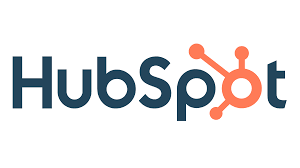
Email Marketing Platforms
- Mailchimp
- Features: Known for its user-friendly interface, Mailchimp supports segmentation based on user activity, demographics, interaction with previous emails, and custom tags that users can create based on their unique data points.
- Benefits: Mailchimp’s segmentation tools are particularly useful for small to medium-sized businesses looking for an easy way to start personalized marketing without needing extensive technical knowledge.
- Constant Contact
- Features: Constant Contact allows for basic to advanced segmentation with criteria including email clicks, opens, and custom fields. Their tools are designed to be intuitive, catering to businesses that may be newer to email marketing.
- Benefits: The platform’s straightforward segmentation capabilities enable quick deployment of targeted campaigns, ideal for small businesses looking to improve engagement and conversions without complex setups.
- GetResponse
- Features: GetResponse offers advanced segmentation options that integrate with all their tools, including webinars and landing pages. Users can create segments based on detailed criteria such as subscriber engagement, scoring, and eCommerce activities.
- Benefits: GetResponse is suitable for marketers who require a comprehensive tool that not only supports email segmentation but also ties into broader online marketing and automation strategies.
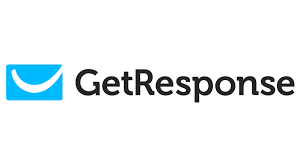
Features Common Across Tools
- Dynamic Segmentation: Most advanced CRM and email marketing tools offer dynamic segmentation, which automatically updates segments as new data comes in. This means your segments are always current without manual intervention.
- Behavioral Tracking: These tools track user behavior on websites and emails, allowing for segmentation based on real interactions, which is more accurate and actionable.
- Integration Capabilities: Integration with other marketing tools (like analytics, social media, and content management systems) is a common feature, ensuring that segmentation strategies are consistently applied across all marketing channels.
Choosing the right tool for segmentation depends largely on your business size, the complexity of your marketing strategies, and your specific segmentation needs. Each of the tools listed above offers unique features that can help businesses effectively segment their audience, ultimately leading to more personalized, relevant, and successful email marketing campaigns.
Challenges in Email Segmentation
Email segmentation can significantly enhance the effectiveness of marketing campaigns, but it is not without its challenges. Marketers often face hurdles in data collection, data quality, and analysis, which can impede their ability to create effective segments. Here’s an overview of these common challenges and practical solutions to overcome them.
Common Challenges
- Data Collection:
- Challenge: Collecting enough relevant data to form meaningful segments can be difficult, especially for new businesses or those that have not prioritized data collection in the past.
- Solution: Implement more robust data collection methods at every customer touchpoint. Use sign-up forms, surveys, and interactions on social media to gather a wide range of data. Ensure that you’re transparent about how you plan to use this data to maintain trust and compliance with data protection regulations.
- Data Quality:
- Challenge: Poor data quality, including outdated or incorrect information, can lead to ineffective segmentation that may target the wrong audience or deliver irrelevant messages.
- Solution: Regularly cleanse your data to remove duplicates, correct errors, and update outdated information. Establish routine checks and balances to maintain data integrity.
- Integration of Data Sources:
- Challenge: Integrating data from multiple sources can be technically challenging and time-consuming, leading to fragmented views of customers.
- Solution: Use integrated CRM systems or marketing platforms that can consolidate data from various sources into a single, accessible database. This integration enables more accurate segmentation and a unified approach to customer data.
- Analysis and Utilization of Data:
- Challenge: Analyzing vast amounts of data and utilizing it effectively for segmentation can overwhelm traditional data processing tools and require specialized skills.
- Solution: Invest in advanced analytics tools that feature AI and machine learning capabilities to automate data analysis and segmentation processes. Training for marketing teams on these tools can also be beneficial.
- Maintaining Compliance:
- Challenge: Adhering to data protection regulations such as GDPR and CCPA can complicate the process of data collection and usage for segmentation.
- Solution: Ensure that your data collection and segmentation practices are fully compliant with relevant laws. This includes obtaining proper consent for data collection and allowing customers to easily access, correct, or delete their information.
Best Practices to Overcome Segmentation Challenges
- Set Clear Goals: Define what you aim to achieve with segmentation and ensure that your data collection and analysis efforts are aligned with these goals.
- Educate Your Team: Regular training sessions for your marketing team about the latest data management and segmentation strategies can keep your practices up to date and effective.
- Monitor and Adjust: Continuously monitor the performance of your segmented campaigns and be prepared to adjust your strategy based on feedback and results. This iterative process helps refine segmentation accuracy over time.
- Leverage Technology: Utilize modern marketing automation and CRM tools that simplify the segmentation process and provide new insights through predictive analytics and customer behavior modeling.
By addressing these challenges with strategic solutions and best practices, marketers can enhance their segmentation efforts, leading to more targeted, relevant, and successful marketing campaigns.
Integrating AI with Segmentation
The integration of Artificial Intelligence (AI) and machine learning into email list segmentation has transformed the landscape of email marketing. These technologies offer sophisticated solutions to many of the challenges traditionally associated with segmentation, such as data analysis and the prediction of customer behavior. Here’s a deeper look into how AI is enhancing list segmentation and the benefits it brings.
Role of AI and Machine Learning in Segmentation
- Automated Data Analysis:
- AI algorithms excel at processing large volumes of data quickly and accurately. In the context of email segmentation, AI can analyze customer data points from various sources (e.g., purchase history, website interactions, social media activity) to identify patterns and trends. This capability allows marketers to segment their lists more precisely without manually sifting through the data.
- Predictive Customer Behavior Modeling:
- Machine learning models use historical data to predict future behaviors. For example, AI can predict which customers are likely to respond to specific offers, who is at risk of churning, or who might upgrade their service. This predictive power enables marketers to create dynamic segments that anticipate customer needs and future actions.
- Dynamic Segmentation:
- AI can update and refine segments in real-time as new data becomes available. This dynamic segmentation ensures that marketing messages are always relevant to the current state of each customer, increasing the chances of engagement and conversion.
- Personalization at Scale:
- AI facilitates deep personalization by allowing segments to be incredibly specific, even down to the individual level. This granular approach ensures that each customer receives content that is tailored specifically to their preferences and behaviors, enhancing the customer experience and loyalty.
AI-Powered Predictions and Automation
- Customer Lifetime Value Prediction:
- AI models can analyze past purchasing behavior and engagement data to forecast a customer’s potential lifetime value. Marketers can use this information to segment customers into high-value, medium-value, and low-value groups, tailoring marketing strategies to maximize the lifetime value of each segment.
- Churn Prevention:
- By identifying patterns that precede customer churn, AI can help marketers segment those at risk and target them with specific retention strategies before they leave.
- Event-Triggered Automation:
- AI can automate the segmentation process based on specific events. For example, if a customer abandons a shopping cart, AI can automatically place them in a segment that will receive a targeted email reminding them of their abandoned cart, possibly offering a discount to encourage completion of the purchase.
- Optimization of Segmentation Strategies:
- Machine learning algorithms continuously learn from new data. This learning capability allows for the constant optimization of segmentation criteria and strategies, ensuring they remain effective as market conditions and customer behaviors evolve.
The integration of AI and machine learning into email list segmentation not only makes the process more efficient but also more effective. With AI, marketers can harness the full potential of their data, delivering personalized experiences that are dynamically tailored to meet the evolving needs of each customer. As AI technology continues to advance, its role in segmentation will only grow, further enhancing the capabilities of marketers to engage their audiences and drive conversions.
Conclusion
Segmenting your email list is not just a tactic—it’s a transformative strategy that can revolutionize your email marketing efforts. By dividing your audience into specific groups based on shared characteristics or behaviors, you can tailor your messages to meet the unique needs of each segment. This approach not only increases the relevance of your communications but also boosts engagement, enhances customer satisfaction, and drives higher conversion rates.
Key Benefits of Email List Segmentation:
- Increased Personalization: Tailored messages resonate better, making your emails more likely to be opened and acted upon.
- Higher Engagement Rates: Relevant content keeps your audience interested, leading to higher open and click-through rates.
- Improved Conversion Rates: Targeted offers based on the segment’s specific interests or past behaviors convert better.
- Enhanced Customer Retention: Personalized interactions foster stronger relationships, encouraging loyalty and repeat business.
- Efficient Resource Allocation: Focusing your efforts on segments most likely to convert can optimize your marketing spend.
Start or Refine Your Segmentation Strategy
Whether you’re just starting out or looking to refine an existing strategy, the power of segmentation can’t be overlooked. I encourage you to dive deeper into the art and science of segmentation by accessing our detailed guide. If you’re interested in ongoing insights and tips on email marketing, consider subscribing to our newsletter for the latest strategies and updates.
Leverage the power of segmentation to ensure your marketing messages hit the mark every time. Start today to see significant improvements in your email marketing outcomes!

